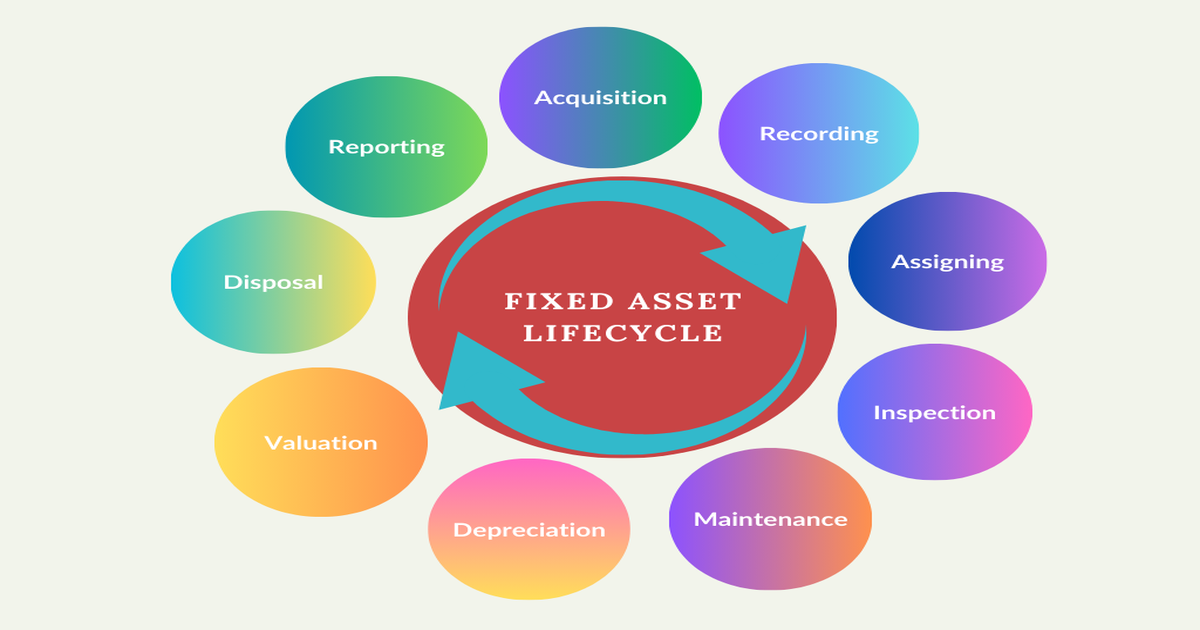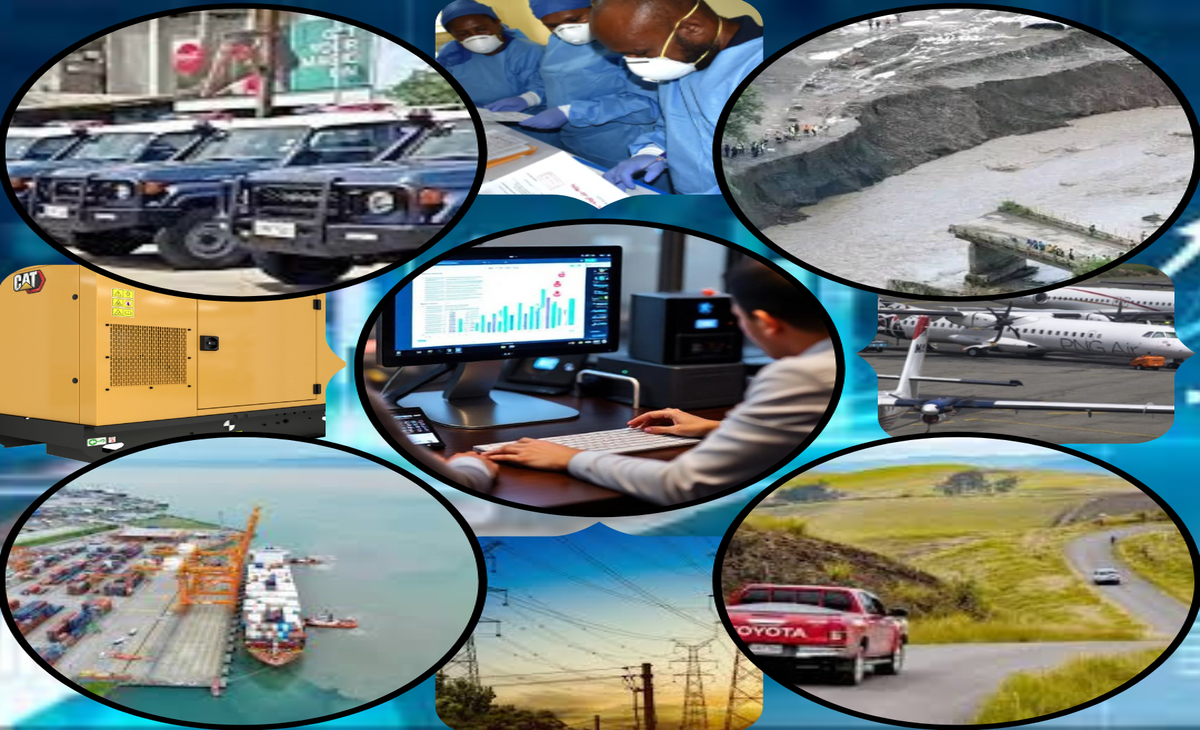Effective management of fixed asset including plants, machinery, infrastructures, property, office equipment, and furniture is vital for operational efficiency, sustainable development, good governance, and economic resilience, especially for businesses and organizations in Papua New Guinea and worldwide.
However, many face common challenges such as outdated infrastructure, inadequate record keeping, disjointed data, and constrained capacity, which lead to higher costs, inefficiencies, and reduced transparency. These issues are worsened in developing economies by resource constraints and environmental risks.
Addressing these challenges requires adopting better practices, modern technologies, and stronger institutional frameworks to ensure assets are managed sustainably, transparently, and efficiently. Which, ultimately, paves the way for long-term social, environmental, and economic prosperity.
Specific and Actionable Solutions for Fixed Asset Management
Develop and implement comprehensive asset management policies and regulations.
Establishing formal policies provides the foundation for consistent and accountable asset management practices. Organizations should create comprehensive policies aligned with international standards like ISO 55000. These policies must specify procedures for registering assets, valuing them accurately, scheduling maintenance, and disposing of assets responsibly. Regular audits and compliance checks are necessary to enforce these policies effectively, ensuring that all stakeholders adhere to standardized procedures. Clear regulations foster transparency, reduce misappropriation, and facilitate better decision-making.
Implement a Centralized Digital Asset Management System
Digital systems enable real-time tracking, reduce errors, and improve data accessibility. Organizations should adopt specialized asset management software such as Kumulsoft Fixed Asset Management Software (FAMS) that consolidates all asset information into a centralized database. This proven, scalable platform is designed to empower both public and private sector entities in Papua New Guinea. Kumulsoft FAMS offers advanced features including; precise asset registration, real-time tracking, 3 layers data security, automated depreciation calculations, and comprehensive reporting. By leveraging such technology, organizations can significantly improve data accuracy, streamline workflows, reduce asset losses, and enhance stakeholder confidence.
Conduct Regular Physical Asset Verification and Audits
Physical verification of assets ensures that records accurately reflect the assets and assist in identifying any discrepancies. Instituting up to date and routine asset inventories, preferably annually or biannually, is critical. Using digital verification tools like handheld scanners or mobile apps, organizations can quickly cross-check physical assets against digital records. Any discrepancies, damages, or missing items should be documented and investigated promptly. Regular verification maintains data accuracy, prevents theft, and ensures assets are utilized effectively, bolstering accountability.
Adopt International Standards and Best Practices
Standards guide includes consistent valuation, lifecycle management, and reporting. Organizations should train staff on standards such as ISO 55000 for asset management and IPSAS for public sector accounting. Incorporating these standards into policies ensures uniform asset valuation, depreciation methods, and financial reporting. This alignment enhances transparency, facilitates stakeholder confidence, and allows for better benchmarking against international best practices. Regular review and updating of procedures based on these standards keep asset management robust and credible.
Build and Strengthen Capacities of Personnel and Institutions
Skilled personnel are vital for effective asset management and technology adoption. Continuous training programs should be implemented to equip staff with knowledge of asset management principles, software tools, and regulatory requirements. Establishing dedicated asset management units or departments ensures focused oversight. Promoting a culture of accountability and ongoing learning supports the integration and institutionalization of best practices.
Establish Lifecycle Management and Maintenance Planning
Proactive management maximizes asset lifespan and reduces costs. Organizations should develop preventive maintenance schedules based on asset types and usage patterns. Utilizing condition monitoring technologies, such as IoT sensors, can provide real-time data on asset health. Planning for upgrades and replacements well in advance prevents emergency repairs and operational disruptions. Documenting maintenance history supports informed decision-making, optimizes resource allocation, and extends the useful life of assets.
Plan for Asset Disposal and Replacement Transparently
Transparent disposal procedures preserve asset value and accountability. Clear criteria and procedures for asset disposal, considering environmental impacts, must be established. Digital records should track disposed assets, ensuring proper documentation and compliance. When assets reach end-of-life, organizations should conduct competitive disposal processes, such as auctions or tenders, to maximize recoverable value. Transparent disposal practices prevent misuse, safeguard organizational integrity, and support responsible resource management.
Incorporate Environmental and Social Considerations into Asset Planning
Sustainable asset management supports environmental and social development objectives. During procurement, operation, and disposal, organizations should assess environmental impacts and prioritize energy-efficient, eco-friendly assets. Incorporating sustainability criteria into decision-making ensures assets contribute positively to environmental goals. Engaging communities and stakeholders in planning and disposal processes fosters social acceptance and inclusiveness. Sustainable practices help organizations meet regulatory requirements and enhance their social license to operate.
Leverage External Expertise and Partnerships
External assistance improves knowledge, technical skills, and the efficient utilization of resources. Engaging consultants for specialized tasks such as asset valuation, system implementation, or policy review can provide valuable insights. Collaborations with international organizations, donors, or industry networks facilitate access to best practices, funding, and technical assistance. Building strong partnerships expands organizational capacity, accelerates implementation, and ensures adherence to global standards, ultimately improving asset management outcomes.
Use Data Analytics and Performance Metrics to Drive Improvements
Data-driven insights enable continuous improvement and proactive management. Organizations should establish key performance indicators (KPIs) such as asset uptime, maintenance costs, and depreciation accuracy. Utilizing dashboards and analytics tools allows managers to visualize trends, identify inefficiencies, and address issues proactively. Regular performance reviews inform strategic adjustments, optimize resource allocation, and enhance overall asset performance. This method promotes a mindset of ongoing development and responsibility.
CONCLUSION: EMBRACING A HOLISTIC AND INNOVATIVE ASSET MANAGEMENT FUTURE!
Effective fixed asset management is fundamental to fostering transparency, operational efficiency, and sustainable development. It requires a comprehensive approach that integrates policy reform, capacity building, process optimization, and technological innovation.
Leveraging advanced digital solutions, such as specialized asset management platforms, can significantly enhance data accuracy, streamline workflows, and strengthen stakeholder trust.
By prioritizing these strategies, businesses and organizations in PNG and beyond can better safeguard their resources, enhance operational efficiency, improve service delivery and growth margin, and build resilient economies. Embracing a holistic and forward-looking approach to fixed asset management is essential for achieving long term growth, social stability, and environmental sustainability, paving the way for a prosperous future.
Take Action Today for Sustainable Asset Management!
Embarking on the journey toward effective fixed asset management requires proactive steps. Begin by reviewing and refining your current policies, and consider implementing digital solutions like Kumulsoft Fixed Asset Management Software (FAMS) to centralize and streamline your asset data. Invest in capacity building for your team and align your practices with international standards to enhance transparency and efficiency. Keep in mind that success depends on proactive planning, engaging stakeholders, and ongoing improvement.
Key Takeaways:
- Developing comprehensive policies and leveraging digital tools are essential for efficient asset management.
- Conducting regular physical verifications and adhering to international standards to ensure data integrity.
- Building internal capacity and fostering strategic partnerships enhance organizational effectiveness.
- Incorporating environmental and social considerations promotes sustainable and responsible practices.
- Utilizing data analytics and performance metrics supports ongoing improvement and informed decision-making.
Looking Ahead: Next in Our Series In our upcoming blog, we will introduce Kumulsoft Fixed Asset Management Software (FAMS) as an alternative solution to address the issues and challenges faced in fixed asset management.
Stay tuned to discover how this innovative platform can help streamline your processes and elevate your asset management outcomes!





